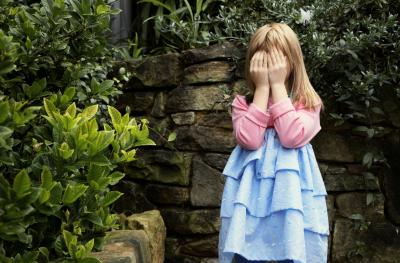While the life of a child may seem carefree, some children’s sunny facades may mask a struggle with panic attacks. In panic, or anxiety attack episodes, children experience a physical response to their emotional stress, often resulting in symptoms that can mimic those of a heart attack. Witnessing these symptoms is very stressful for parents and leaves them eager to find a solution to their child’s anxiety.
Attack Symptoms
If you believe that your child might be experiencing a panic attack, check for symptoms to ensure that what you are witnessing is not just a normal childhood tantrum or upset. When suffering a panic attack, children may experience dizziness, increased heart rate, trembling, shortness of breath or disorientation, reports the American Academy of Child and Adolescent Psychiatry. For the duress your child is experiencing to be classified as a panic attack, he must exhibit more than one of these tell-tale signs.
Panic Attacks vs. Panic Disorder
While panic attacks are a part of panic disorder, not every child who suffers a panic attack has a panic disorder. As Keep Kids Healthy reports, panic disorder is the term used to describe a condition in which patients experience repeated panic attacks at intermittent intervals. The American Academy of Pediatrics cautions parents not to immediately assume that their child who suffers one panic attack has a panic disorder, as some children will never experience a reoccurence and, as a result, do not really suffer from a panic disorder and do not require continued medical treatment.
Impact of Untreated Attacks
If your child experiences only one attack, he will likely recover from the scary episode with no long-lasting effects; however, if she experiences repeated panic attacks, these incidents could have an impact on her future health and happiness. As the American Academy of Child and Adolescent Psychiatry reports, children who suffer from repeated panic attacks are prone to experiencing socialization problems. They may also struggle in school, experience constant anxiety and begin to avoid places that they associate with feelings of anxiety. The source reports that in severe cases, some of these children even develop a fear of leaving the house, a condition known as agoraphobia. Experiencing continued panic attacks can also leave the child more prone to substance abuse issues in the future.
Diagnostic Procedure
If your child experiences a panic attack, share information about this event with his doctor. While specific practices vary from doctor to doctor, most doctors will not explore the problem unless there is a reoccurence. If your child exhibits repeated panic attacks, the doctor will complete a medical history and provide a physical examination to rule out any physical causes. Because, as WebMD reports, there is no laboratory test for panic attack activity, much of the diagnostic procedure for this disorder consists of observation. If your child continues to suffer these incidents of upset, her doctor will likely recommend evaluation by a mental health provider to gather additional information and possible treatment.
Treatment Options
In most cases, doctors turn to medication to ease the effects of a panic disorder, reports the American Academy of Child and Adolescent Psychiatry. Often, this medication is given in conjunction with therapy sessions in which the child is taught to more effectively handle his feelings of stress. Because each child’s panic attacks are slightly different, your doctor will likely employ trial and error when developing a treatment program for your child.





